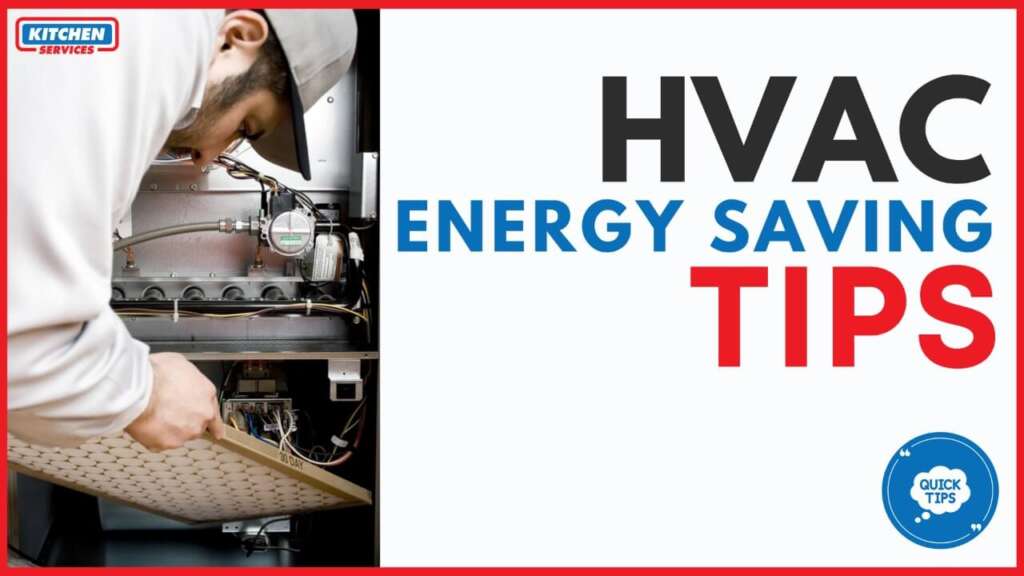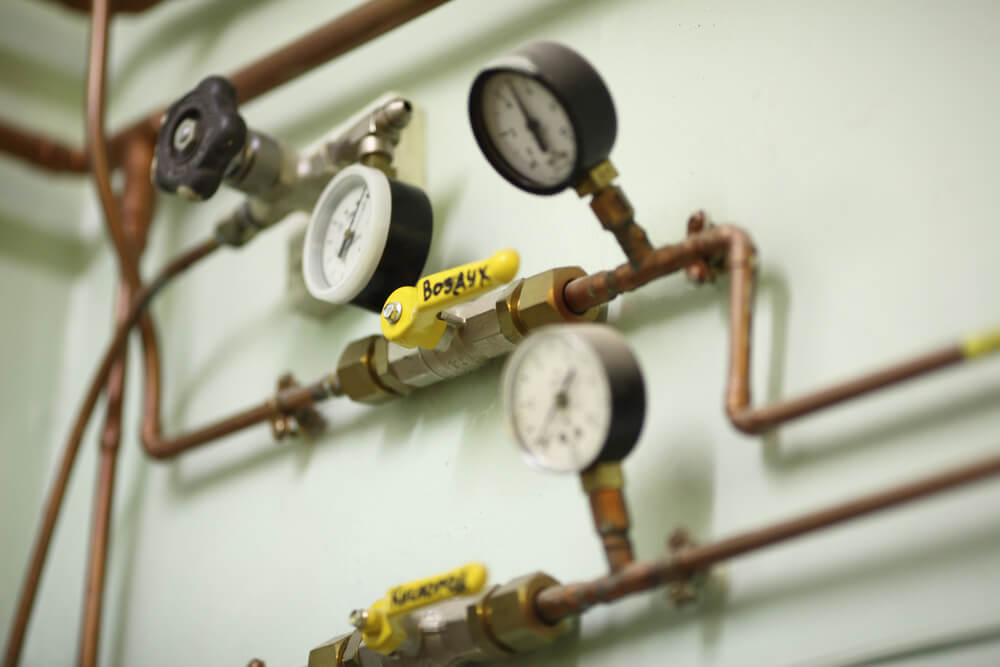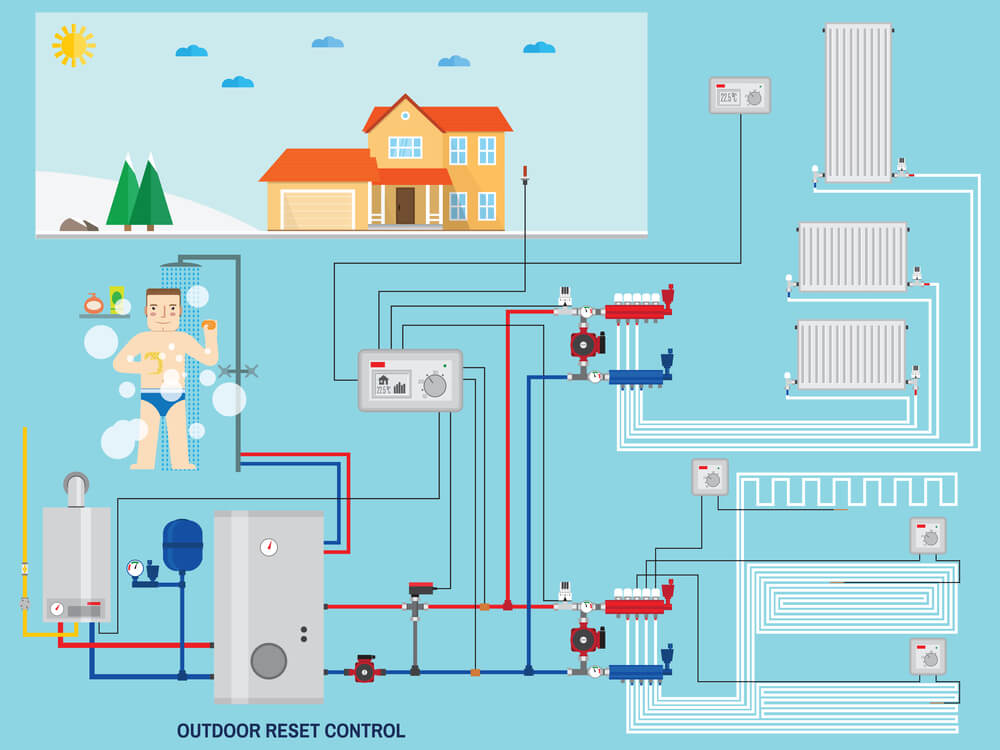Your HVAC system plays a very important role in order to keep your house cool in the summer and warm during the winter season. It is also one of the most costly items that can be there on your energy bills. However, if you replace your HVAC unit with a new one, the more energy-efficient model can eventually help in reducing your energy usage, these HVAC Energy Saving Tips are some of the simpler and cost-effective improvements that anyone among you can make in order to be more energy efficient.
There is a simple saying about saving power “the cheapest kilowatt-hour is the one you don’t use” your HVAC energy efficiency would always start with a mindset of using less and getting the most out of what you have. So as your HVAC system would represent a significant portion of typical energy costs (experts say as much as 50 to 60 percent), these measures can make a big difference.
You must never have to choose between staying comfortable or saving money. As your HVAC system accounts for as much as 50 percent of your entire energy bill. Which can also add up to big bucks over the course of the whole year-round. However, being extra smart with your HVAC system can also turn into being smart with your money. Yes, you can reduce your HVAC energy costs in some simple ways with some major HVAC Energy Saving Tips.
Why Save Energy?
Well, every homeowner might often look for some effective ways so that they can save money as well as the environment, and one of the best ways to do this is by cutting down unnecessary energy usage. Just by updating or changing the little behavior in the way you usually use your home appliances, there may become high chances that you can increase your home’s efficiency, protect the environment as well as save on your annual utility bills without compromising your comfort.
How to reduce HVAC costs?
Keep in mind that heating, ventilation, and air conditioning (HVAC) systems account for 32 percent of any commercial building’s energy usage, as per the U.S. Department of Energy. Due to a combination of intelligent purchasing, maintenance programs, and strategic planning, all the building managers can decrease the overall consumption and keep heating and cooling costs very low.
“Recent advancements in HVAC technologies make energy efficiency more accessible to a wide range of buildings – from apartment buildings and corporate headquarters to universities and retail stores,” says Chris Makarewicz, eastern North American operations manager at Jaga Climate Systems. “When building managers are aware of the specific ways they can reduce HVAC demands, they can develop customized systems that help to improve energy efficiency throughout a building.”
10 ways to save energy at home
Written down below are some of the HVAC Energy Saving Tips in detail.
1. Adjust your commonplace behaviors
In order to reduce energy consumption in your home, you do not always have to go somewhere and get yourself some energy efficient products every time. Always remember that energy conservation can be as simple as just turning off all your lights or appliances when they are not in use. You may also use energy-intensive appliances less just by performing many household activities manually, such as hang-drying your clothes rather than putting them in the dryer, or washing dishes by hand as well rather than using a dishwasher all the time.
All these behavior adjustments that can have the highest potential for utility savings are turning down the heat on your thermostat in the winter and using your air conditioner less in the summer. Your heating, as well as cooling, can cost constitute nearly half of your average home’s utility bills, so all these reductions in the intensity and frequency of heating and cooling can get you the greatest savings.
There are a lot of different tools that you may use in order to figure out where most of your electricity is being used in your home and which appliances are actually using the most electricity on a daily basis.
2. Change your light bulbs
Traditional incandescent light bulbs usually use an excessive amount of energy, and they must be replaced more often than their energy efficient substitutes.
Halogen incandescent bulbs, compact fluorescent lights (CFLs), and light-emitting diode bulbs (LEDs) usually use from 25 to 80 percent less electricity and last up to 3 to 25 times more than traditional bulbs. Although these energy efficient bulbs are somehow expensive than the other ones but still their efficient energy use and longer lifetimes mean that they cost less in the long run.
3. Use smart power strips
The electricity that is used by electronics even when they are turned off or in their standby mode, is considered as one of the major sources of energy wastage. Well in fact, it is even said that 75% of the amount of energy that is used to power household electronics is basically consumed also when they are switched off, which can cost you up to $200 per year.
So installing smart power strips, which are also known as advanced power strips would help in eliminating the problem of all these phantom loads just by shutting off the power to electronics when they are not in use anymore. All these smart power strips can be set to turn off at a designated time, during the period of inactivity, through remote switches, or based on the status of a “master” device.
4. Install a programmable or smart thermostat
Well, a programmable thermostat can be set to a setting where it automatically turns off or to reduce heating and cooling during all those times while you are sleeping or even away. The time when you install a programmable thermostat, you will reduce the wasteful energy use from heating and cooling without even upgrading your HVAC system on the whole.
On average, a programmable thermostat would save you $180 per year. Programmable thermostats might come in many different models that can be set in order to fit your weekly schedule. All additional features of programmable thermostats may include indicators for when to replace air filters or HVAC system problems, which would also improve the efficiency of your heating and cooling system.
5. Buy energy efficient appliances
Buying energy efficient appliances is one of the main HVAC Energy Saving Tips. On average, appliances are responsible for roughly 13% of the total household energy use. While purchasing an appliance, you should always try to pay attention to two numbers that is the initial purchase price well as the annual operating cost. Even though the energy efficient appliances might have higher upfront purchase prices, but their operating costs might get often 9-25% lower than conventional models.
While purchasing any energy efficient appliance, you must always look for all those appliances that have the ENERGY STAR label, which is actually a federal guarantee that your appliance will use less energy during use and when on standby than standard models.
All these energy savings may differ based on the specific appliance. For example, ENERGY STAR certified clothes washers consume 25% less energy and 45% less water than conventional ones, whereas ENERGY STAR refrigerators would use only 9% less energy.
6. Lower your water heating expenses
Water heating is one of the major contributors to your overall energy consumption. Apart from purchasing any energy efficient water heater, there are three methods by which you can reduce your water heating expenses:
- You can simply use less hot water
- You can turn down the thermostat on your water heater
- You can insulate your water heater and the first six feet of hot and cold water pipes.
In case you are considering replacing your water heater with any efficient model, you must keep in mind two major factors:
- The type of water heater that meets your needs
- The type of fuel it will use.
For instance, tankless water heaters can prove to be energy efficient, but they can also be a poor choice for large families as they might not be able to handle multiple and simultaneous uses of hot water. Cost-effective water heaters can be anywhere between 8% and 300% more energy efficient than a conventional storage water heater.
7. Replace your old windows with energy efficient windows
As we are all well aware of the fact that your windows are a major source of energy waste so they can add up to 10-25% of your total heating bill. In order to prevent heat loss through your windows, you can replace single-pane windows with double-pane products in their place.
For all the homes in colder regions, gas-filled windows with “low-e” coatings can considerably reduce your heating expenses. As well, interior, or exterior storm windows can also help in reducing unnecessary heat loss by 10 to 20 percent. You must always try to consider storm windows if your region experiences frequent extreme weather events.
Whereas in warmer climates, the total heat gain that is through windows might be a big problem. Apart from minimizing heat loss, low-e coatings on windows can also help in reducing heat gain by reflecting more light and lowering the amount of thermal energy that enters your home. That all depends on where you basically live, as mentioned above ENERGY STAR windows can always save you $20-$95 each year on your utility bills. Window shades, shutters, screens, and awnings can also provide you with an extra layer of insulation between your home and outside temperatures, leading to even more energy conservation.
8. Upgrade your HVAC system
As we know that your HVAC system is basically composed of heating, ventilation, and air conditioning equipment. So just heating alone is responsible for more than 40% of home energy consumption. Just because these homes in Northern regions are more exposed to much colder temperatures during the whole year, again ENERGY STAR gas furnaces may have different requirements in the northern and southern halves of the United States.
In comparison the air conditioning is not a significant contributor to your energy bills in fact on average, it might make up six percent of the total energy use of your home. Well, again the ENERGY STAR central air conditioning units are eight percent more efficient than conventional models. Air conditioning systems are usually integrated with heating systems, which means that you should purchase your new furnace and air conditioner at the same time in order to ensure that the air conditioner performs at its maximum rated energy efficiency.
9. Weatherize your home
Weatherizing also known as sealing air leaks all-around your home, can be a great way for you to reduce your heating and cooling expenses. It can prove to be the most common sources of air leaks into your home are vents, windows, and doors. In order to prevent all these leaks, you must make sure that there are left with no cracks or openings between the wall and vent, window, or doorframe.
In order to seal air leaks between stationary objects, such as the wall and window frame, you can also apply the caulk. For cracks between moving objects, such as operable windows and doors, you can apply weather stripping. Weatherstripping and caulking are simple air sealing methods that can typically offer a return on investment in less than a year. Air leaks can also occur through openings in the wall, floor, and ceiling from plumbing, ducting, or electrical wiring.
10. Insulate your home
Well, insulation plays a key role in order to lower your utility bills by retaining heat during the winter and in order to keep heat out of your home during the summer season. The recommended level of heat resistance, or “R-value,” for your insulation totally depends on where you basically live. In warmer climates, the recommended R-value might be lower than for all those buildings that are located in colder regions like the Northeast.
Why conserve energy in the first place?
Well, the energy conservation is really very important and beneficial for a lot of reasons. You can also save money, you may increase your property value, as well as you can protect the environment all through simple energy-saving measures.
These are some of the great advantages you can gain from saving energy no matter your exact motivation for conservation in the first place. By simply taking a small step towards living a more energy-conscious lifestyle, you can begin to enjoy all of the perks of being energy efficient.



